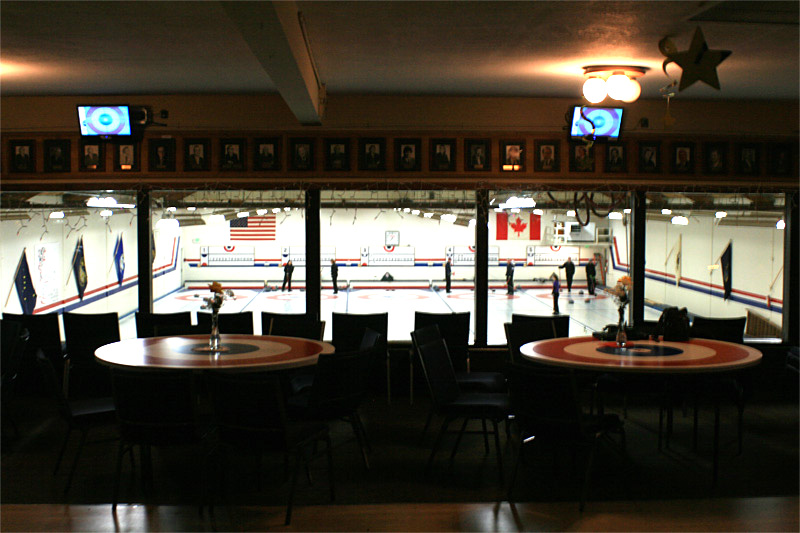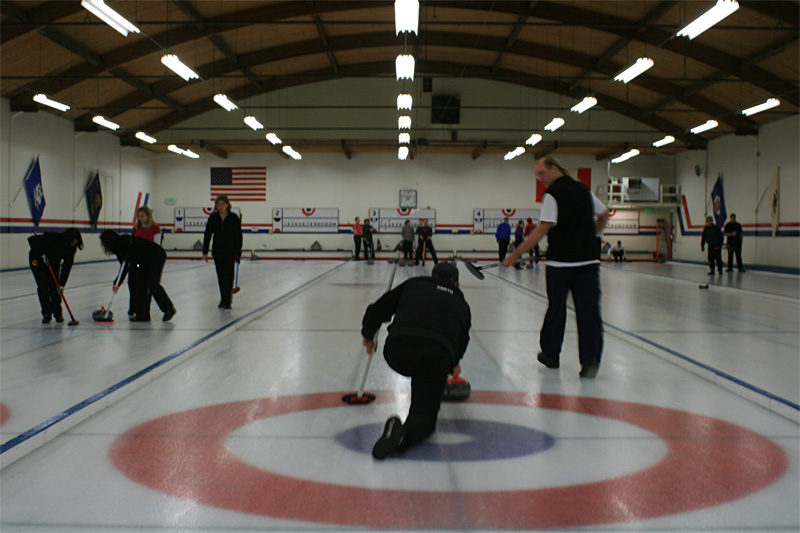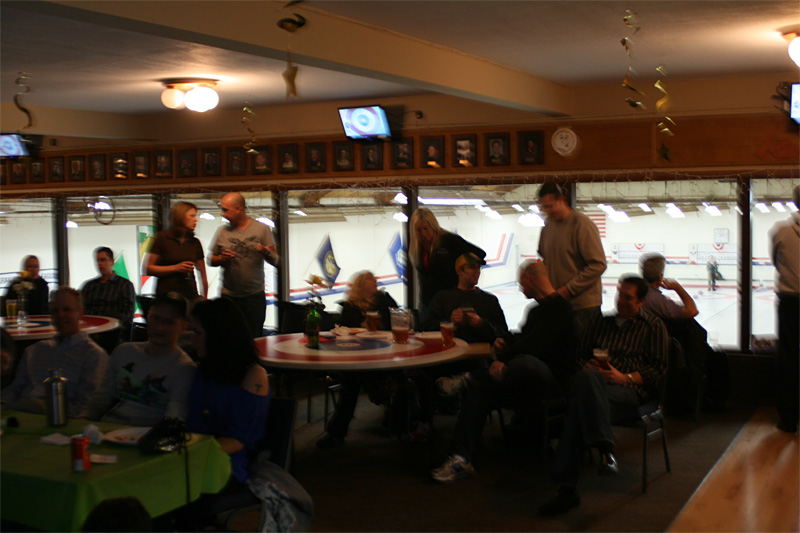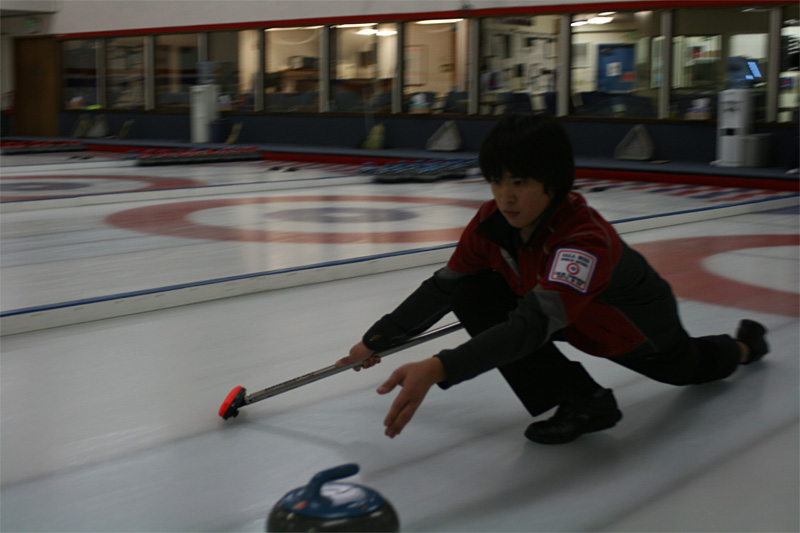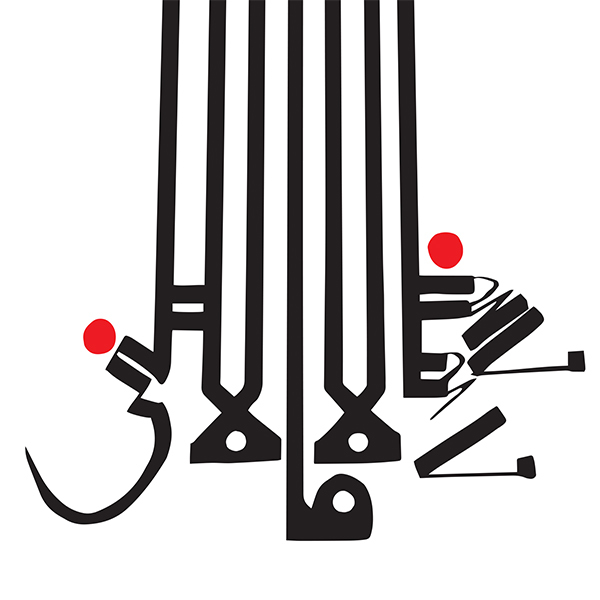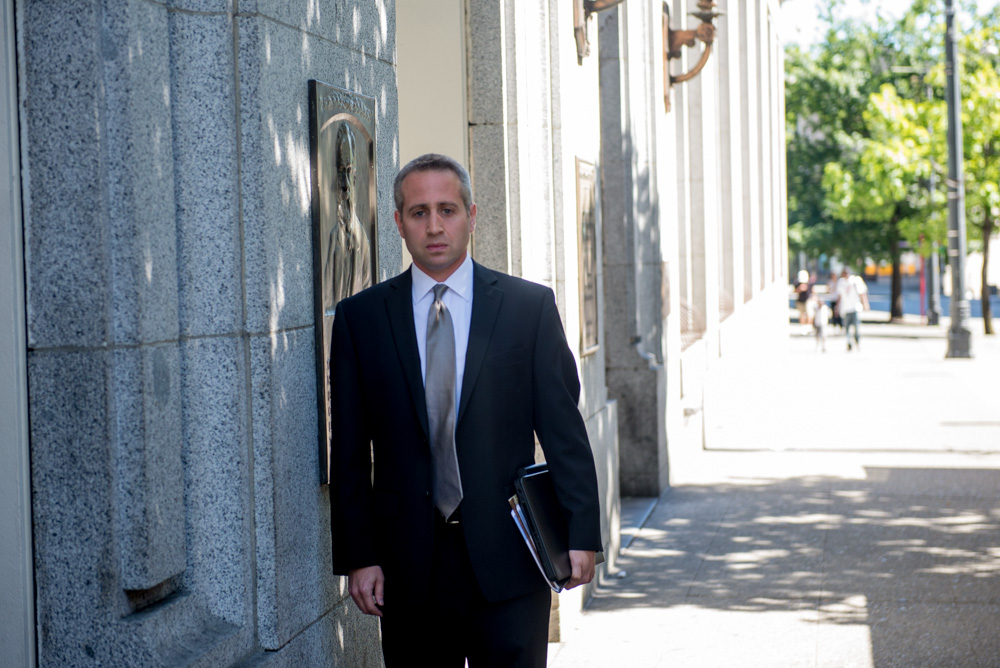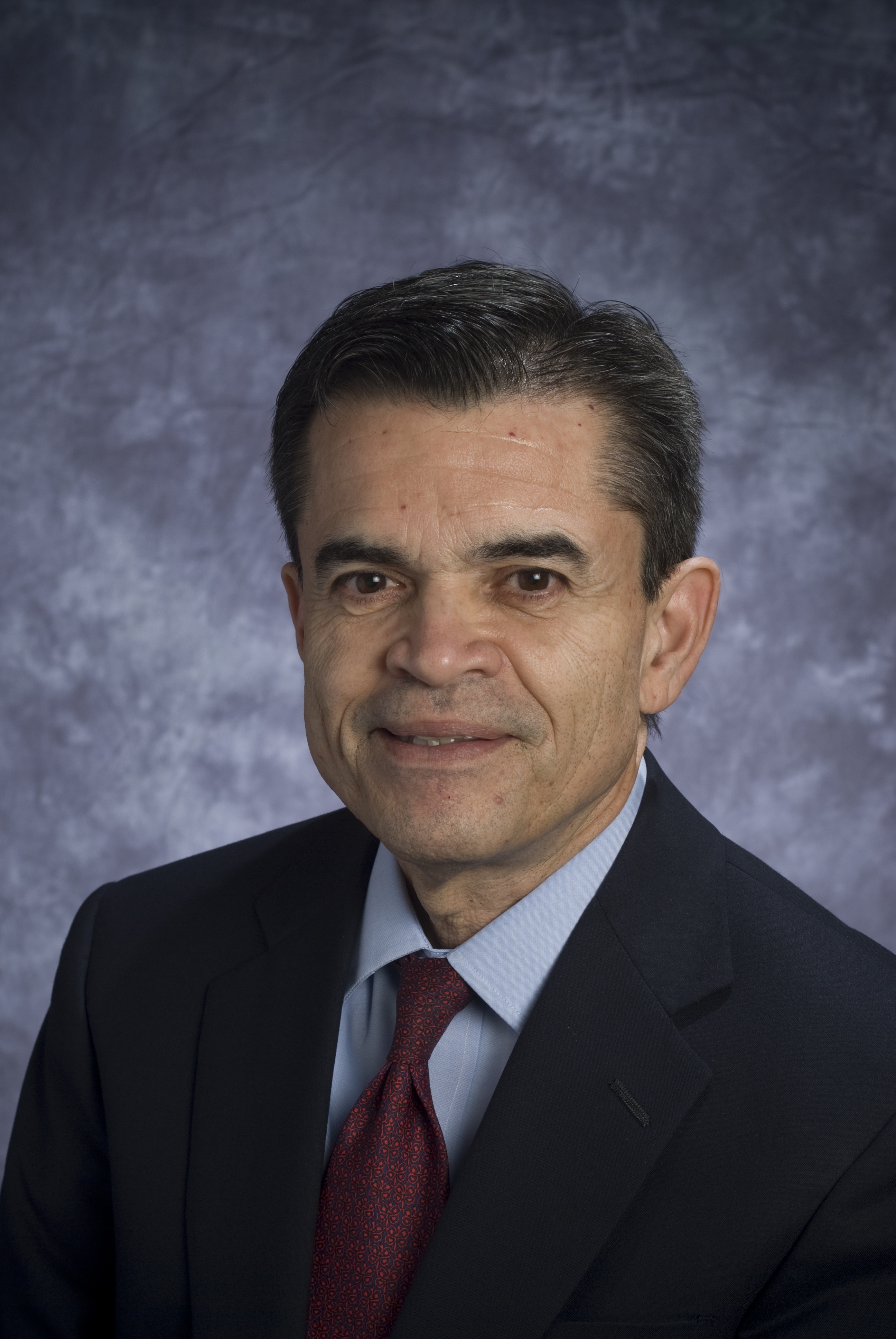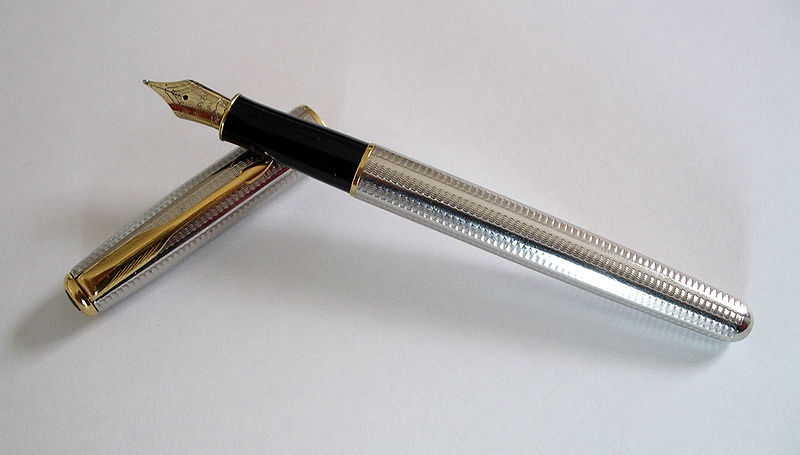The ice at the Granite Curling Club’s North Seattle clubhouse is strangely empty. League play has wrapped up, and the various members, who just minutes before were sliding 44-pound granite rocks down the rink, have retreated upstairs for a Winter Olympics viewing party. They’re in the rumpus room that overlooks the ice and the adjoining clubhouse bar, throwing down beers and wagering on what’s transpiring on the tube.
The clubhouse itself isn’t easily recognizable as a sporting arena. From the street, nothing sets it apart visually from the other nondescript buildings near the intersection of N. 130th St. and Aurora Avenue North. And certainly nothing indicates that the place is the only dedicated curling facility west of the Rockies.
But it is.
Right now, the only club member left on the ice is also one of its youngest. Jake Vukich, 16, a third-generation curler, has the sport in the strands of his DNA. He’s working on his drills as his 81-year-old grandmother Betty Zokai, herself a veteran of international curling competition, watches from behind the glass.
Curling is a deceptively complex game, as is its scoring system. Yet club member Scott McLean has a simple explanation for it: “Curling was invented by people who thought plaid equaled camouflage.”
The sport’s nomenclature is just as unwieldy as tennis’. A game comprises 10 rounds of play, called “ends.” The smoothed round stones, known as “hammers,” are the scoring devices. In essence, one player—or “skip”— angles a smoothed granite rock toward a target, while directing his two colleagues, armed with brooms, on how fast to sweep the ice so as to control the slide of the hammer to where it’s intended.
But just because it was invented, as lore has it, by a drunken Scotsman doesn’t mean it can be played while drinking large amounts of alcohol. Curling isn’t bowling, after all.
“It’s a chess match on ice,” says McLean. “That’s why you see so many left-brained types in here. It appeals to their sensibilities, and you could almost make the argument that it’s about art.”
Downstairs, photos inscripted with names like Frosch, Pepelnjak, and Vukich have been placed to commemorate the various championships won by the club. The wall itself is nearly full, the Granite Curling Club having produced 37 semi-pro championship teams—more than any other curling club in America.
The teens from team Beighton, the latest Granite-affiliated championship team, have yet to have their win commemorated on the wall. Earlier this month, they became the U.S. Curling Association’s Junior Men’s national champions. Right now they’re gathered with the rest of the club, watching as curling gets another shot on the sport’s largest stage, the Winter Olympics.
Curling had a coming-out party during the 2006 Olympics in Turin, surprising everyone by besting more traditional winter sports like figure skating and hockey in the television ratings. Soon, curious Seattleites began to trickle into the club, eager to try their hand. Afterward, membership in the club spiked.
Now club members say they’re expecting a similar bump in interest at the close of the Vancouver games. They’ve held off melting the ice for the traditional spring off-season, and are holding a few additional open houses at the clubhouse to accommodate the expected rush—including one this Saturday, Feb. 20. “There might be a thousand people that come out,” says McLean.
In the club’s early days, the presence of curlers in Seattle was in a way more obvious. The club rented space at a local Ballard ice rink. A few years later, they began pooling their money to build their own arena. And because that arena is on American soil, you might expect that the main event at an Olympics viewing party organized by the Granite Curling Club of Seattle would somehow involve Team USA.
You’d be wrong.
Most of the 50 or so members lounging around the television Tuesday night are watching the legend of the great white north, Kevin Martin, as he dramatically scores three points to pull Team Canada ahead of Germany. Meanwhile, a decidedly smaller crowd interested in the Americans’ match against the Swedes stands around a small computer screen to watch as the game streams online.
It’s not that the members aren’t rooting for the U.S. team; it’s just that Martin is the bald-headed messiah of international curling—a reputation earned by making moves that seem impossible for lesser curlers, says one club member between sips of beer. Granted, more than a few of the club’s 500-plus members are native Canucks, and others are the offspring of the Canadian expats who helped found the club back in 1961.
Back on the ice, Jake Vukich practices gliding. He’s heard all the jokes. He’s gotten the curious looks from his friends and classmates. And still he’s here, nearly every day, practicing. His father Jim was a curling champion. His mom is a champion a few times over. She and his grandmother are headed to Russia in April to compete for the World Senior Women’s Championship. So you could say he’s got a pedigree.
He steps into the footholds embedded in the ice, then launches himself forward. His version of this sequence looks graceful. A novice’s first attempt most assuredly will not.
“You can come here every day for six months, and after that you’ll probably have the fundamentals down,” says Jake. “But only if you’re dedicated.”
